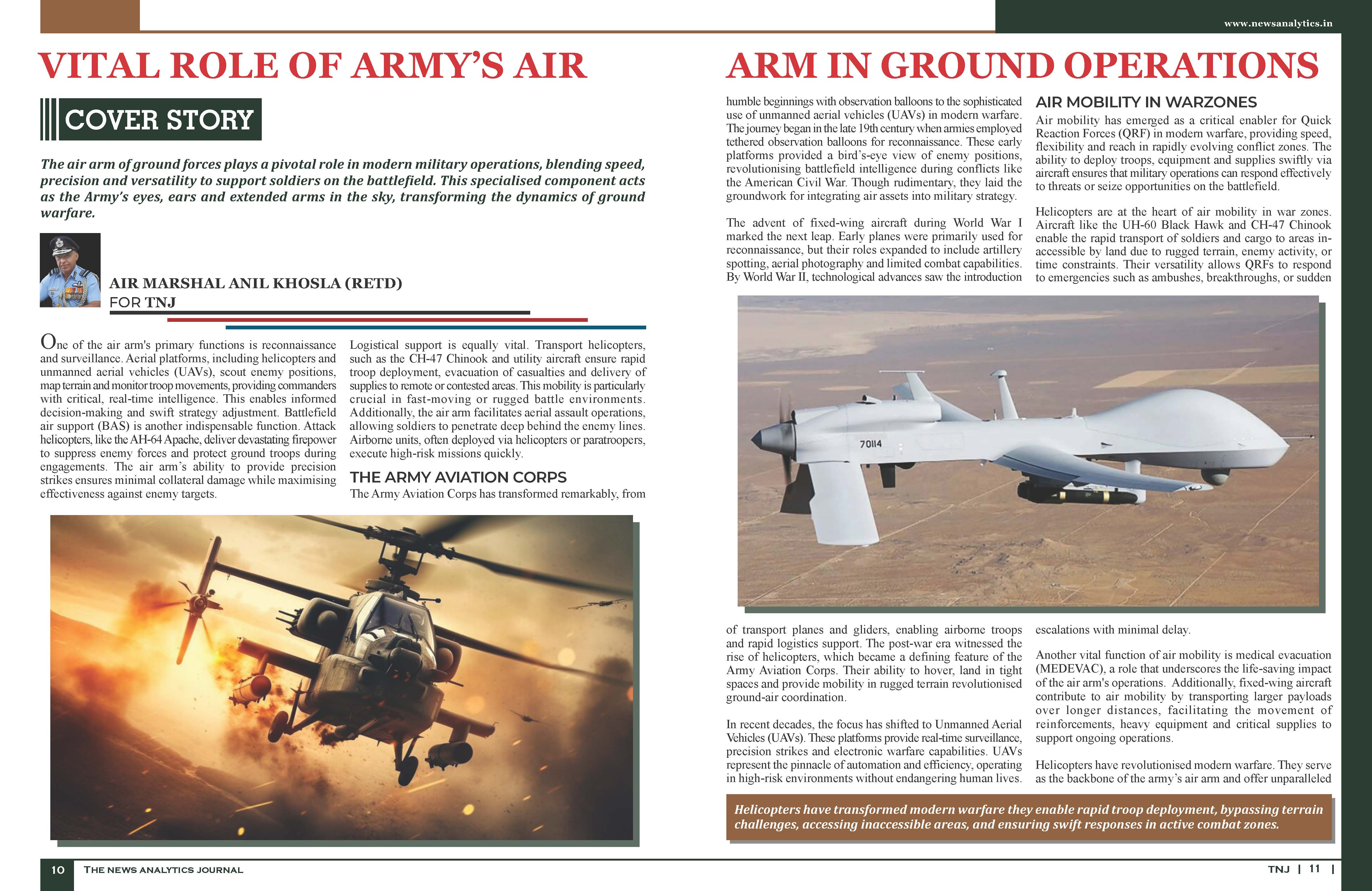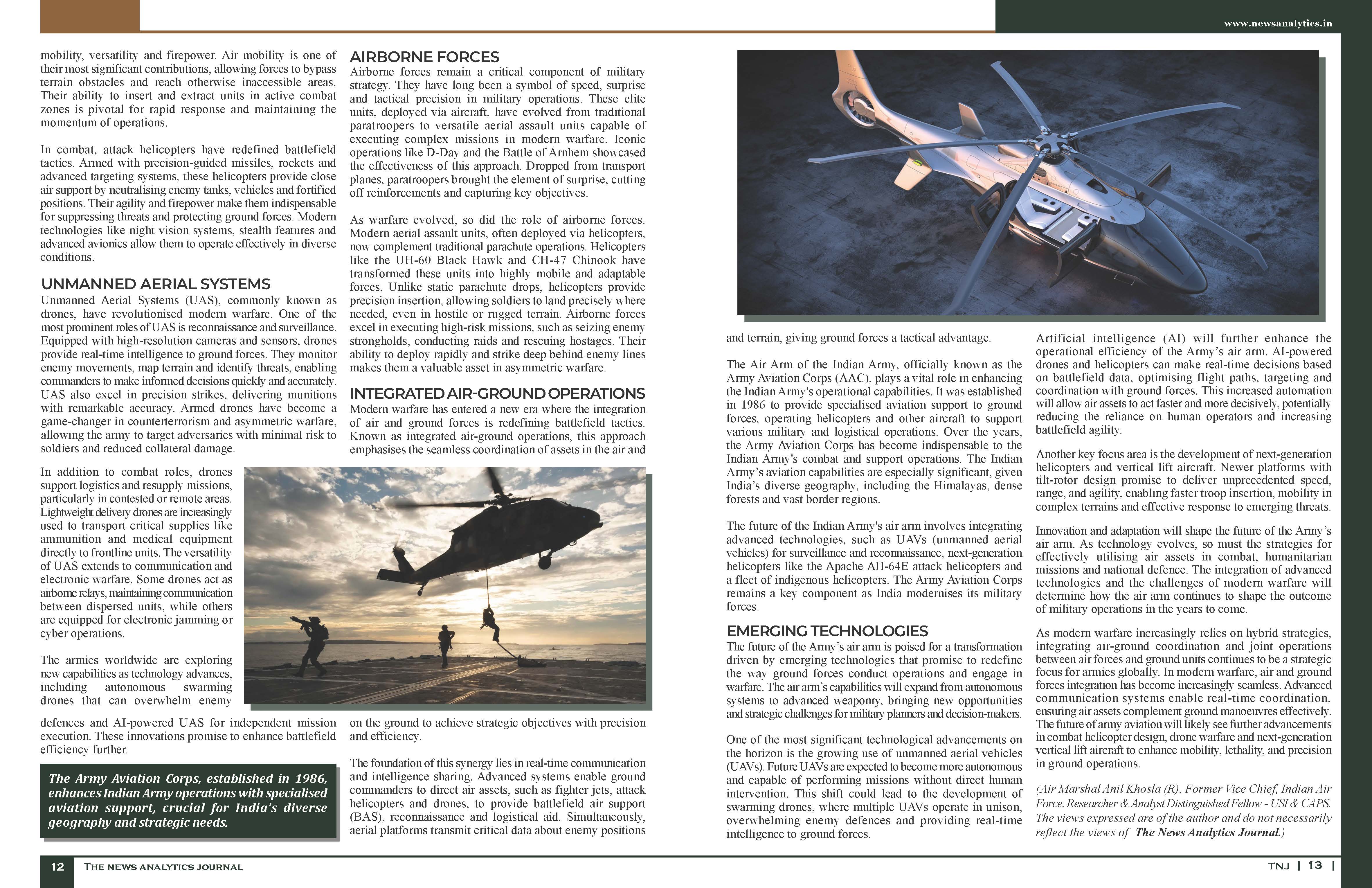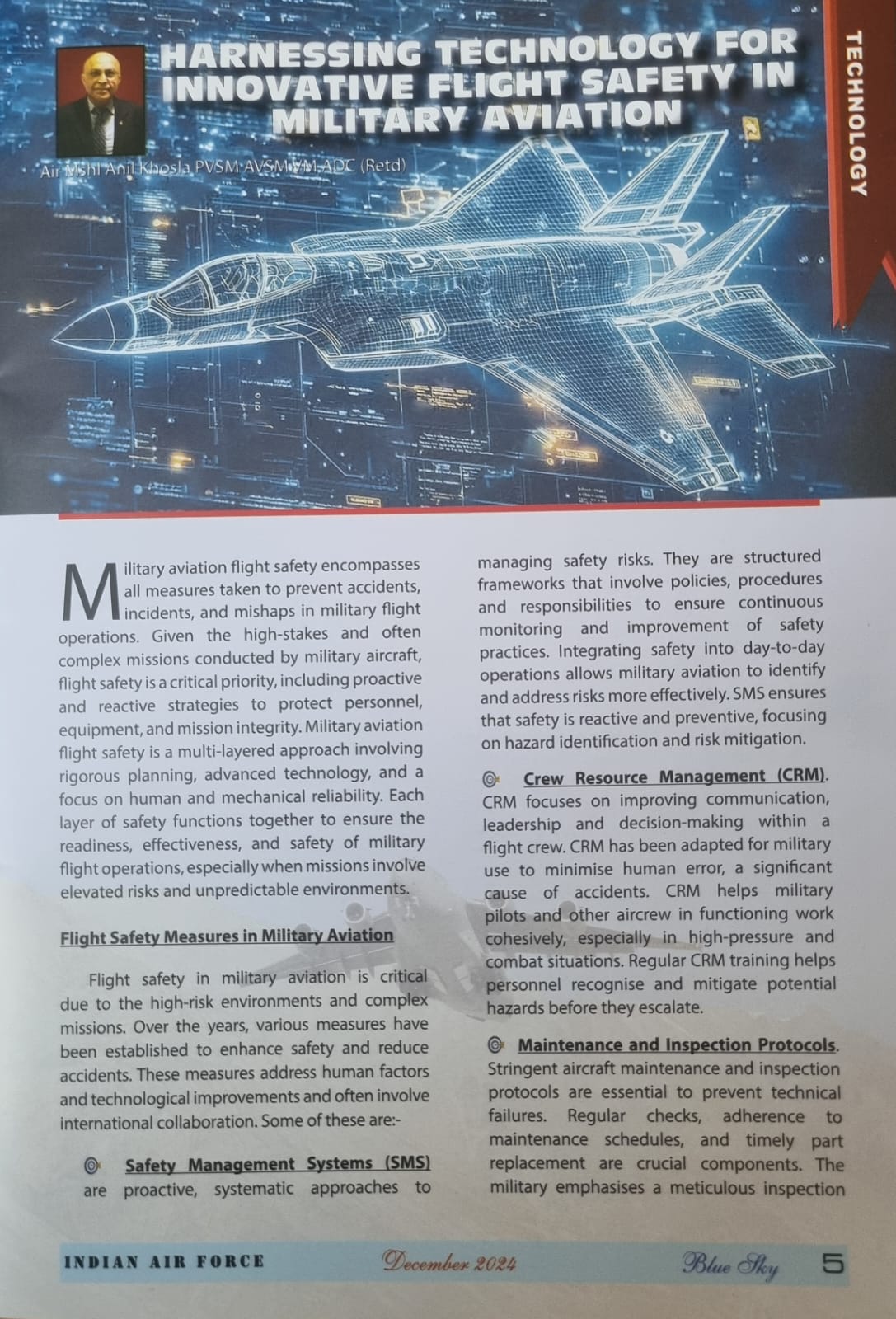
Pic Courtesy Net
My Article published on the Life of Soldiers website on 10 Jan 25.
Within a single fortnight, the world was rocked by the tragic loss of life in nine separate air crashes. This stark reality serves as a poignant reminder of the ever-present dangers in modern aviation. While air travel is generally safe, these recent disasters underscore the urgent need for unwavering vigilance in aviation safety practices. Each crash presents us with crucial lessons—be it about aircraft technology, crew training, regulatory oversight, or emergency response—that demand immediate attention to prevent further tragedies.
Unfortunate Occurrences
Jeju Plane Crash. The most recent and deadliest crash occurred on December 28, when a Jeju Air passenger aircraft crashed while attempting to land at Muan Airport, South Korea, resulting in 179 fatalities. Reportedly, air traffic control issued a bird strike warning six minutes before the crash. Shortly thereafter, the pilot declared a mayday, indicating immediate distress. The aircraft attempted a belly landing after its landing gear failed to deploy, leading to a skid off the runway. The plane collided with a concrete wall approximately 250 meters from the runway’s end, causing it to burst into flames. This structure housed navigational equipment and has been criticised for its hazardous placement.
Air Canada Mishap. On December 28, Air Canada Express Flight 2259 suffered a landing gear failure upon arriving at Halifax Stanfield International Airport. The aircraft skidded down the runway, its wing catching fire. All 73 passengers and crew were evacuated safely, avoiding injury or fatalities.
Azerbaijan Airlines Crash. Christmas Day, December 25, saw an Embraer ERJ-190AR aircraft operated by Azerbaijan Airlines crash near Aktau Airport in Kazakhstan, killing 38 out of 67 passengers. The Embraer 190AR aircraft was en route from Baku, Azerbaijan, to Grozny, Russia, carrying 62 passengers and five crew members. The plane was reportedly struck by a Russian surface-to-air missile over Chechnya, intended to intercept a Ukrainian drone. This caused significant damage, leading to an attempted emergency landing in Aktau, Kazakhstan, where the plane ultimately crashed.
Small Aircraft Crash in Scotland. On December 23, a small aircraft crashed near Fife Airport in Scotland, killing the 50-year-old pilot. Witnesses reported unusual plane manoeuvres before it plummeted into a field shortly after take-off.
Private Plane Crash in Brazil. Earlier in the month, on December 22, a private plane crashed in Gramado, Brazil, killing ten members of the Galeazzi family, including prominent businessman Luiz Claudio Galeazzi. The accident also injured 17 people on the ground, with two in critical condition. The aircraft took off from Canela Airport under unfavourable weather conditions, including overcast skies and fog. Shortly after take-off, it crashed approximately 3 kilometers from the airport. The plane reportedly struck a building’s chimney, the second floor of a residential structure, and a furniture store before coming to rest. Debris also impacted a nearby inn, leading to fires that caused additional injuries on the ground.
Papua New Guinea Islander Crash. On December 22, a Britten-Norman BN-2B-26 Islander operated by North Coast Aviation crashed in the Sapmanga Valley of Morobe Province, Papua New Guinea. All five people aboard were killed when the plane, travelling from Wasu Airport to Lae-Nadzab Airport. Among the deceased were the pilot, David Sandery, a seasoned bush pilot with over 15,000 hours of flying experience, and four passengers, including government officials and their spouses. The aircraft departed Wasu Airstrip at 10:12 a.m., and a distress signal was received at 10:30 a.m., prompting an emergency response led by the Aviation Rescue Coordination Centre (ARCC). Search efforts were delayed due to adverse weather conditions, but the crash site was eventually located the following morning.
Cessna Accident. On December 20, a Cessna plane en route from Porto Velho to Manaus in Brazil went missing. Its wreckage was found in the Amazon rainforest five days later, with both occupants, pilot Rodrigo Boer Machado, 29, and passenger Breno Braga Leite, tragically confirmed dead. The aircraft, a Cessna with registration PT-JCZ, departed without a flight plan and was undetected on air traffic control radar. The last known GPS location was over the southeast region of Manicoré. An extensive search operation involving the Brazilian Air Force (FAB), civil police, military police, fire department, and sniffer dogs culminated in the discovery of the crash site on December 25. The dense and inaccessible terrain of the Amazon rainforest significantly impeded search efforts.
Kamaka Air Crash in Hawaii. On December 17, a Cessna 208B Grand Caravan, operated by Kamaka Air LLC, crashed near Daniel K Inouye International Airport in Honolulu, Hawaii. On a training flight, the plane lost control shortly after take-off, executing a sharp left bank before crashing into a building. Both pilots perished in the accident. The aircraft, operating as Kamaka Air Flight 689, departed from Honolulu International Airport around 3:15 p.m. local time, bound for Lanai Airport. Shortly after take-off, the plane lost altitude and crashed into a vacant building near the airport. Witnesses reported erratic flight behaviour before the crash, and the pilot’s last communication indicated the aircraft was “out of control.” The two onboard individuals were identified as pilot-in-training Hiram DeFries, 22, and instructor pilot Preston Kaluhiwa.
Argentina Challenger Crash. Another fatal crash occurred on December 17 when a Bombardier BD-100-1A10 Challenger 300 crashed near San Fernando Airport in Argentina, killing both pilots, 35-year-old Agustín Orforte and 44-year-old Martín Fernández Loza. The aircraft was returning from Punta del Este, Uruguay, on a ferry flight with only the two pilots on board. Upon landing at San Fernando Airport, the jet overran the runway, breached the airport perimeter fence, collided with nearby buildings, and caught fire. Eyewitnesses reported that the aircraft failed to decelerate effectively during landing.
Preliminary Lessons and Recommendations
Preliminary lessons from the recent air crashes suggest areas for improvement in aircraft safety, crew training, and regulatory oversight. However, these insights are based on initial assessments. Thorough investigations, which are underway, will provide more precise causes and detailed recommendations. The results of the inquiry will offer a clearer path forward for safety enhancements, reassuring the aviation community about the future of aviation safety.
Runway and the Operating Zone. A solid concrete structure within the runway safety area is a severe safety violation. Adhering to international safety standards is crucial, as the runway operating zone should be free of hard obstacles to allow aircraft to decelerate safely in overrun scenarios. Implementing safety features such as Engineered Materials Arrestor Systems (EMAS) is crucial, but the maintenance of runways is equally important. Ensuring that runways are properly maintained and contaminant-free enhances braking effectiveness and reduces overrun risks. This safety measure cannot be overlooked and should be a priority for all aviation stakeholders.
Wildlife Hazard Management. The incidences of bird strikes near International Airports, attributed to their proximity to bird habitats, underscore the need for enhanced wildlife management strategies. Measures like sound cannons, lasers, warning lights, etc., can mitigate such risks.
Emergency Response Preparedness. The rapid escalation from landing difficulties to a catastrophic fire highlights the need for robust emergency response protocols at airports, including efficient coordination among firefighting units and medical teams to manage such crises effectively.
Timely Search and Rescue Operations. The delay in locating the crash site due to adverse weather highlights the need for robust search and rescue protocols that can operate effectively in challenging conditions. Investing in advanced tracking technologies and improving inter-agency coordination can enhance response times. Deploying adequate resources, including aerial surveillance, ground teams, and technology such as drones, is essential for effective search operations, especially in challenging terrains like dense rainforests. Engaging local communities in emergency response efforts can be beneficial, as they often possess intimate knowledge of the terrain and can assist in search operations.
Flight Planning and Tracking. Operating without a filed flight plan can severely hinder search and rescue operations in an emergency. Filing a flight plan should be mandatory for all flights, regardless of distance or familiarity with the route. Equipping aircraft with real-time tracking devices can provide continuous position updates, enhance situational awareness and expedite location efforts if an aeroplane goes missing. Regular maintenance and testing of emergency locator transmitters (ELTs) is crucial to ensure they activate correctly during a crash, facilitating prompt search and rescue operations.
Weather Assessment and Decision-Making. Some of these incidents underscore the critical importance of thorough weather assessments before flight, especially in regions prone to rapid weather changes. Pilots must evaluate current and forecasted conditions to make informed go/no-go decisions. Operating in poor visibility necessitates strict compliance with IFR procedures. Pilots should be adequately trained and current in instrument flying to navigate safely under such conditions.
Airspace Management in Conflict Zones. Comprehensive risk assessments are necessary when planning flight paths over or near active conflict zones. Airlines must evaluate potential threats, including military activities, to ensure passenger safety. Enhanced communication is crucial, and real-time information sharing can help reroute flights from emerging threats. International aviation bodies may need to revisit policies to protect civilian aircraft from becoming inadvertent targets.
Aircraft Design and Redundancy. The simultaneous failure of multiple systems, including landing gear and possibly engine components, raises concerns about the aircraft’s design redundancies. A thorough review of safety features is warranted to ensure they can withstand multiple concurrent failures.
Aircraft Maintenance and Performance. Ensuring that aircraft are maintained in optimal condition is vital for safe operations. Adherence to maintenance schedules and promptly addressing any identified issues can prevent mechanical failures. Comprehensive pre-flight checks and adherence to maintenance schedules can prevent mechanical failures. Accurate calculations of aircraft performance, considering weight, balance, and environmental conditions, are essential to ensure safe take-off and climb capabilities.
Pilot Training and Proficiency. These crashes highlight the need for regular training in emergency procedures, including handling unexpected situations during critical phases of flight like take-off and landing. Pilots should be well-prepared to manage emergencies effectively to enhance survival outcomes. Regular simulation of emergency scenarios can better prepare pilots to handle unexpected situations during actual flights. Training should emphasise decision-making skills under pressure to improve pilots’ ability to manage in-flight emergencies.
Stabilised Approach and Landing. Ensuring the aircraft maintains a stable approach path, speed, and configuration is critical for a safe landing. Deviations should prompt a go-around decision. Pilots should assess landing performance by considering runway length, surface conditions, and aircraft weight to ensure adequate stopping distance. Pilots should be trained to execute go-arounds decisively when approach parameters are not met rather than attempting to salvage an unstable approach.
Flight Data Recording. Under the Civil Aviation Safety Authority regulations, some smaller aircraft are not required to have a black box installed. However, equipping even small aircraft with flight data recorders can provide valuable information in accident investigations and help prevent future occurrences.
Conclusion
These tragedies serve as a sombre reminder of the complexities and risks inherent in modern aviation. While the loss of life is deeply tragic, it highlights the urgent need for proactive safety measures. The challenges in aviation are multifaceted, encompassing factors such as weather-related decision-making, pilot proficiency, urban flight operations, aircraft maintenance, emergency response coordination, equipment standards, communications, airport safety protocols, and search-and-rescue operations. As investigations unfold, further insights are expected to guide policy changes and safety improvements to prevent future tragedies. Implementing these lessons is essential to strengthening the safety and security of international aviation, while continuous improvements in emergency preparedness will help mitigate risks and enhance overall safety.
Your valuable comments are most welcome.
Link to the article on the website:-
https://www.lifeofsoldiers.com/2025/01/10/deadly-fortnight-nine-air-crashes-several-lessons/
For regular updates, please register your email here:-
References and credits
To all the online sites and channels.
References:-
- Graham, J. D., & Aigner, M. E. (2024). The Jeju Air Crash: A Detailed Analysis of the Muan Airport Tragedy. International Journal of Aviation Safety, 42(1), 12-34.
- Kipling, T. (2024). The Christmas Day Azerbaijan Airlines Crash: An Investigation into Aircraft Performance and Weather Impact. Aviation Accident Quarterly, 68(3), 45-62.
- Simpson, M., & Harrington, J. (2023). Aviation Safety in the South Pacific: The Papua New Guinea Crash. Journal of Aviation and Aeronautics, 32(4), 90-102.
- Walker, R. (2023). Private Aviation Crashes in Brazil: A Case Study of the Galeazzi Family Tragedy. Air Safety Report, 19(2), 75-87.
- BBC News. (2023, December 28). Jeju Air Crash: At Least 170 Dead in South Korean Aviation Tragedy. BBC News.
- CNN Aviation. (2023, December 25). Azerbaijan Airlines Embraer Crash Near Aktau Airport. CNN.
- Reuters. (2023, December 22). Brazil Plane Crash Kills Ten Members of Prominent Family in Gramado. Reuters.
- Aviation Safety Network. (2023). Summary of the Kamaka Air Crash in Hawaii. Aviation Safety Network.
- International Civil Aviation Organization (ICAO). (2022). Global Aviation Safety Plan 2022-2025. ICAO.
- Shappell, S. A., & Wiegmann, D. A. (2017). Aviation Safety Programs: A Management Handbook. CRC Press.
Disclaimer:
Information and data included in the blog are for educational & non-commercial purposes only and have been carefully adapted, excerpted, or edited from reliable and accurate sources. All copyrighted material belongs to respective owners and is provided only for wider dissemination.



